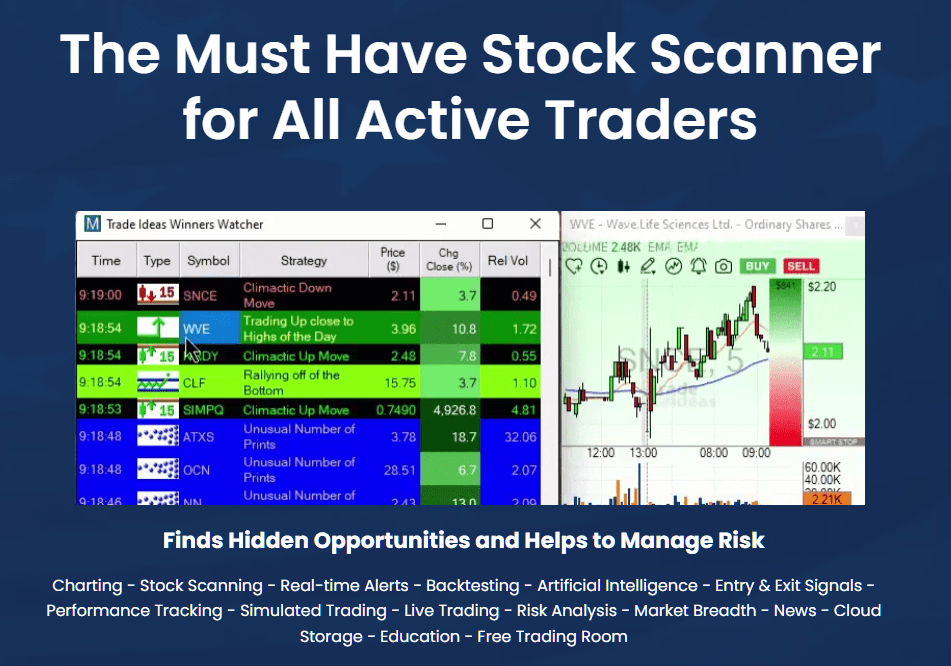Assessing the accuracy and performance of AI analysis and stock prediction trading platforms is crucial to ensure you're relying on an AI tool that will provide accurate and reliable information and forecasts. Here are the ten most important tips to effectively evaluate these platforms:
1. Backtesting Results
What to Check: See whether a platform offers backtesting capabilities that can determine the accuracy of its predictions based upon the historical data.
Why it matters: Backtesting can help validate the AI accuracy of the models through comparing the predictions to real-world outcomes.
Find platforms that allow users to modify backtesting parameters, such as the duration of time and asset classes.
2. Real-time Performance Monitoring
What to look out for What to look for: Examine how the platform performs under real-time market conditions.
Why It Matters: The real-time performance is a better measure of the effectiveness of a platform than historical backtesting alone.
Tip : You can sign up for a demo account or an evaluation version of the software to keep track of the real-time movement and compare it to your forecasts.
3. Prediction Error Metrics
What to look for Measurements such as Mean Absolute Error, Root Mean Squared Error or R-squared to gauge the accuracy of predictions.
Why it's Important: These metrics give a quantitative measurement of how closely predictions match the actual outcomes.
Tip: Platforms that openly disclose these metrics are generally more transparent and reliable.
4. Win Rate and Success Ratio
What to look for: Check for the platform's winning rate (percentage that is based on accurate predictions) as well as its success ratio.
What is important Why it matters: A high win rate and success rate suggests better predictive accuracy as well as potential profitability.
You should be wary of websites that claim to have a high winning rate (e.g. 90 %+),) as the system cannot assure 100 percent success.
5. Benchmarking Market Indices for Benchmarking
What to Look For What to Look For: Compare the platform's forecasts and performance with major market indices (e.g., S&P 500, NASDAQ).
Why It Matters It helps to determine if the platform is outperforming or falls short of the market overall.
Find out if the performance remains consistent over time, and not only in the short run.
6. Consistency across Market Conditions
What to Look for: Evaluate how the platform performs during different market conditions.
What is important The platform that is robust must perform effectively regardless of market conditions not just when the market is in a favorable state.
Test the platform's predictions in volatile markets or during market declines.
7. Transparency in Methodology
What to look for: Understand the AI models and algorithms employed (e.g. neural networks or reinforcement learning).
Why It's Important Transparency lets you assess the scientific and technical rigor of a platform.
Avoid platforms that employ a "black box" model that does not explain how the predictions were made.
8. User Reviews and Independent Tests
What to look for Review reviews from other users and look for independent tests.
What is important Tests and reviews conducted by independent researchers give unbiased information about the reliability and effectiveness of the platform.
Visit forums such as Reddit or copyright to see what others have to say about their experiences.
9. Risk-Adjusted Returns
What to Look For What to look for: Evaluate the performance of the platform by using risk-adjusted measures such as the Sharpe Ratio or Sortino Ratio.
Why It Matters What are these metrics? They reflect the amount of risk required to earn returns, giving a more comprehensive view of the performance.
Sharpe Ratio: If it's high (e.g. greater than 1) it indicates greater returns when risk is taken into account.
10. Long-term track record
What to Look For: Evaluate the platform's performance over a time period (e.g. 3 to 5 years).
What's the point? Long-term results are a better measure of reliability than the results from a short-term study.
Beware of platforms that only display the results of a short-term study or a cherry-picked achievement.
Bonus Tip: Test your account using an online version
Test the platform's real-time predictions with a trial or demo account, without having to risk your real money. This allows you to test the accuracy and effectiveness.
Use these guidelines to evaluate the accuracy, performance, and the reliability of AI stock prediction and analysis platforms. You can then choose the platform that best aligns with both your trading goals and your risk tolerance. It is crucial to keep in mind that there is no perfect platform. The most effective approach is to mix AI knowledge and your own analysis. Check out the top inciteai.com AI stock app for website tips including ai investing, best ai copyright to buy, ai stock, artificial intelligence stocks, ai trader, ai bots for trading, ai for stock trading, best ai stocks to buy, ai stock prediction, best ai stocks to buy and more.

Top 10 Tips For Evaluating Transparency Of Trading Platforms For Stocks
Transparency is a crucial aspect when it comes to evaluating AI-driven stock prediction and trading platforms. Transparency is important because it allows users to trust the platform, understand the reasoning behind its decisions and confirm the accuracy. Here are the top 10 tips to evaluate the credibility of these platforms:
1. A Clear Explanation of AI Models
TIP: Make sure the platform clearly explains the AI models and algorithms that are used to predict.
What is the reason? Understanding the fundamental technology helps users assess its reliability.
2. Disclosure of Data Sources
Tip : Determine whether the platform makes public what sources of data are being used (e.g. historical stocks, news and social media).
What is the benefit of knowing the data sources You can be sure that the platform has trustworthy and accurate data.
3. Performance Metrics, Backtesting and Results
Tip: Check for transparency in the performance metrics reported (e.g. rate of accuracy and ROI) and the backtesting results.
This is to allow users to evaluate past performance against the latest platform.
4. Real-Time Updates and Notifications
Tip. Find out if your platform provides real-time data and alerts regarding trades or modifications to the system, like trading predictions.
What is the reason? Real-time transparency allows users to be informed of every critical action.
5. Limitations: Open Communication
Tip: See if your platform clarifies the limitations and potential risks of the trading strategies it uses and the predictions it makes.
The reason: Recognizing limitations increases trust and helps users make educated choices.
6. Access for users to raw Data
Tip: Check if users have access to raw data or intermediate results that are used by AI models.
Why: The raw data is available to users for their own analysis.
7. Transparency of Fees and Costs
TIP: Ensure that the website clearly lists the fees, subscription costs as well as any hidden charges.
Transparent Pricing: It builds trust by preventing the unexpected cost of.
8. Regular Reporting and Audits
Check if your platform is routinely inspected by third parties or you can find reports about its performance.
The reason: Independent verification increases credibility and guarantees accountability.
9. Predictions and Explainability
TIP: Search for information about the process by which the platform creates specific predictions or suggestions (e.g. features importance or decision trees).
The reason: Explainability helps users to be able to comprehend AI decisions.
10. Customer feedback and support channels
Tip: Determine whether there are clear channels of communication for users to provide feedback and get support. Also, determine whether the company is transparent in its response to concerns expressed by users.
Why: Responsiveness in communication is an indication of commitment to transparency.
Bonus Tip: Regulatory Compliance
Verify that the platform adheres to financial regulations that are relevant, and make sure it discloses this conformity status. This adds an additional level of transparency.
By thoroughly assessing these aspects it is possible to determine if an AI trading and stock prediction platform operates transparently, enabling you to make informed choices and gain confidence in the capabilities of AI. Read the top best ai for stock trading examples for site examples including ai investing tools, trading with ai, best stocks to buy now, best ai stocks to buy now, trade ai, ai bots for trading, ai trading tools, chart ai for trading, stocks ai, best stocks to buy now and more.
